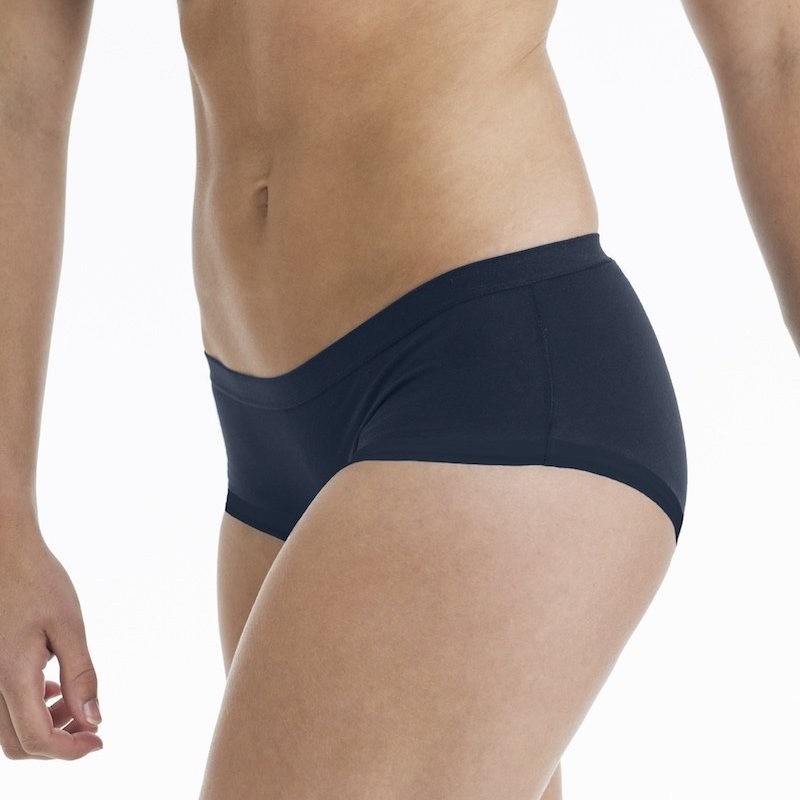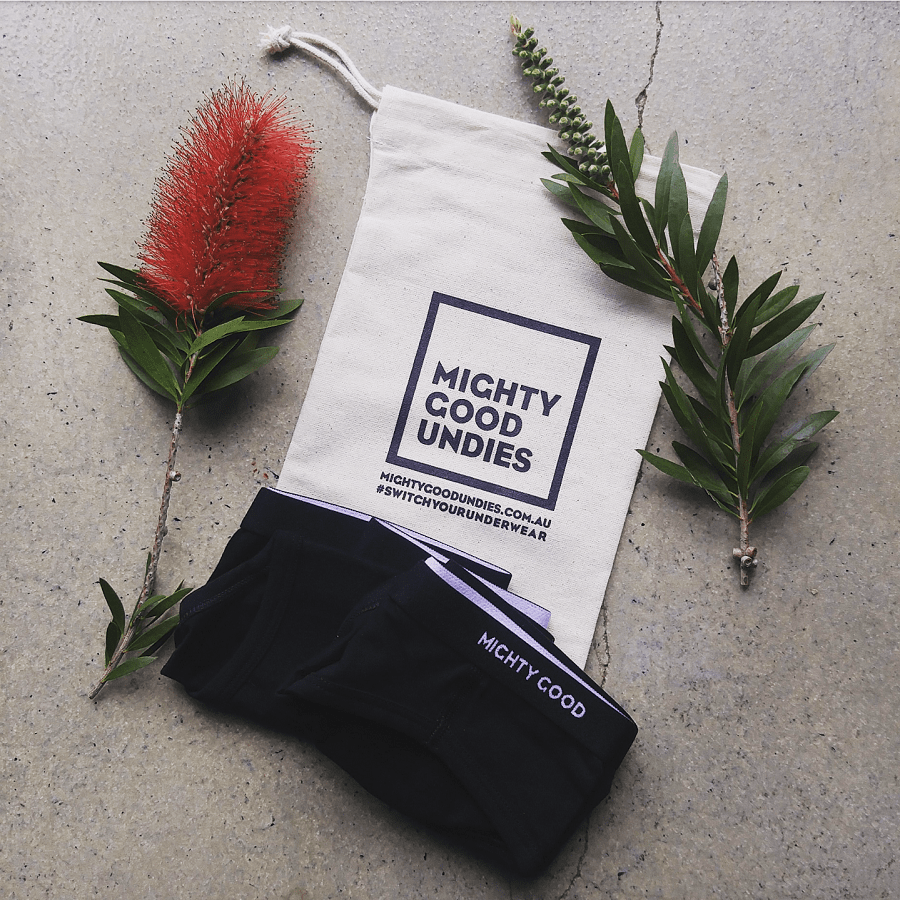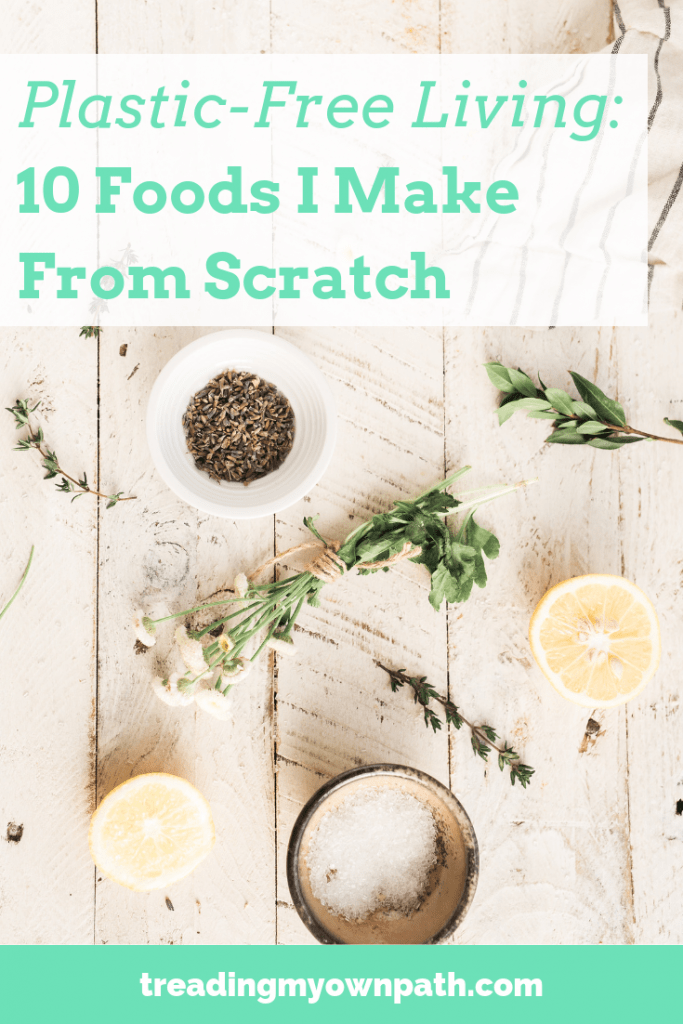A Guide to Ethical + Organic Underwear Brands
Last updated March 2021.
Part of me loves the idea of one day learning to sew my own underwear, but let’s be real. As someone who only just has the skills to sew a reusable produce bag together, it won’t be happening any time soon. Plus there are probably a hundred other skills I’d rather learn first.
The reality is, I buy my underwear. Chances are, so do you.
I wanted to share all the options for sustainable, ethical and organic cotton underwear that I’ve come across. There’s been a few companies come and go over the years (Pants to Poverty – how good is that name? – being my first ethical underpant love that sadly disappeared a few years ago) but overall the options do seem to be growing.
I know some people balk at the price of ethical underwear. I have a few things to say about this. Firstly, I believe that we get what we pay for. Cheap things generally have externalized costs – meaning costs that aren’t factored in to the price.
That could mean not paying workers properly, or it could mean dumping chemicals in waterways that someone else has to pay to clean up – or pay with their health.
If I believe in paying the true cost, then I have to put my money where my mouth is, so to speak. As someone who buys very few things new, I feel that when I do make a purchase I can afford to invest in what most aligns with my values.
And yes, it does take a bit of a mindset shift to get my head around the fact that I pay more for my underwear than I pay for my jeans. But I don’t buy new jeans and I don’t buy used underwear, so that’s how it is.
Finally, I can’t tell anyone else what they can and cannot afford. All I can do is share my choices and my reasoning. I think where we can afford to spend a bit more and buy ethical underwear, its important to do so, to support these companies and practices. If you can afford it, I’d encourage you to do so too.
And if you cannot, there are plenty of other ways that you can create positive change in your life. No judgement and no guilt – we are all trying our best to do what we can.
This post contains affiliate links. You can read more at the end of the post.

I’ve listed the brands below in alphabetical order for ease. I’ve not included period underwear here as that is a separate topic: you’ll find my period underwear review here. You can read my post about ethical men’s underwear here.
Bhumi

Company HQ: Australia / Fairtrade: YES / Organic: YES / Made from: 95% cotton, 5% elastane / Made in: India / Ships: Worldwide
Bhumi is an Australian company selling organic cotton products. Their four women’s styles are bikini, boyleg, midi, and midi with leg band (pictured). Their colours are black, white, grey, navy blue and tan.
Sizes: S – XL ( AU/UK 8 – AU/UK 20, US 4 – 16, EU 36 – 44)
Tried and tested: I’ve never tried these, but I do know that Bhumi is one of the older and more established brands available in Australia.
Website: bhumi.com.au
Etiko Underwear

Company HQ: Australia / Fairtrade: YES / Organic: YES / Made from: 95% cotton, 5% elastane / Made in: India / Ships: Worldwide
Etiko make underwear in three styles: bikini, boyleg and full brief. Colours are black, grey, tan (they call it latte) and pink.
Sizes: AU/UK 10 – AU/UK 20 (US 6 – 16, EU 38 – 48).
Tried and tested: I’ve purchased the boyleg style in a size 10. They are a generous 10 (if you’re petite they are going to be too big for you). They are slightly cheaper than some other brands, but don’t last quite as long.
Website: www.etiko.com.au
Laura’s Underthere

Company HQ: Canada / Fairtrade: N/A / Organic: N/A (second-hand and upcycled fabric) / Made from: upcycled jersey / stretch knit / Made in: Canada / Ships: USA and Canada
Laura’s Underthere makes unique limited edition underwear made from upcycled jersey and stretch knit material. All of the designs are gender inclusive (Laura calls it genderful) and for every pair purchased, another pair is donated to someone in need. Styles include hipster, mid waisted and high wasted briefs, maternity and unpouched boxers in colourful patterned fabric.
Tried and tested: I’ve not tried these, but I love the huge range of sizes available.
Sizes: XXS – XXXXL
Website: laurasunderthere.com
Living Crafts

Company HQ: Germany / Fairtrade: YES / Organic: YES / Made from: 95% cotton, 5% elastane / Made in: India / Ships: Worldwide
Living Crafts is a German company specializing in organic cotton textiles, with a good range of women’s underwear. Styles include high-waisted and hipster briefs, and boyleg. They have a range of plain colours, and also some simple patterned fabric.Their factories are 100% wind powered.
Sizes: XS – XL ( AU/UK 8 – AU/UK 20, US 4 – 16, EU 34 – 48)
Website: livingcrafts.de
Mighty Good Undies

I no longer recommend this brand. Might Good Undies went into liquidation after failing to pay suppliers in August 2019 and were purchased by another entity, renamed Mighty Good Basics (with a new company registration) and resurfaced as if nothing had happened. When I raised my concerns (ironically, after a social media post where they stated they were committed to transparency) they were evasive, simply telling me they were a new company but not addressing the issue of non-payment to suppliers, nor answering other concerns I raised.
It’s not fair trade and it’s not ethical if you don’t pay your suppliers. I would not recommend purchasing from this company.
Nisa Women

Company HQ: New Zealand / Fairtrade: No / Organic: uncertified / Made from: cotton or merino, elastane / Made in: New Zealand / Ships: Worldwide
Nisa have three styles in cotton: high full briefs, low full briefs and low cheeky briefs. Colours are black, navy and merlot, grey and mustard, rose, and pomegranate. They also make a merino wool low-waisted brief in electric blue.
Sizes: S, M, L and XL (AU sizes 10 – 16). They make plus-size underwear (sizes 18 – 24) to order.
Nisa employ women from refugee backgrounds to sew their underwear in Wellington, New Zealand. They state that they aim to source organic certified cotton ‘wherever they can’.
Tried and tested: I’ve not tried these but love the company’s ethos and vision.
Website: nisa.co.nz
Organic Basics

Company HQ: Denmark / Fairtrade: No / Organic: YES / Made from: 95% cotton, 5% elastane / Made in: Turkey / Ships: Worldwide
Organic Basics have two styles in organic cotton: bikini briefs and thongs, in black or rose nude. (They also have a Slivertech range with two stypes – hiperster and thong – which are 82% organic cotton, 12% SilverTech polyester and 6% elastane).
Sizes: XS – XL (XS fits waist 61 – 65cm / 24 – 25″, XL fits waist 81 – 85cm / 31 – 33″)
Tried and tested: Organic Basics actually gave me a voucher to try their products. I chose the bikini briefs in a size S – I’d read that the sizing comes up big – and they fit perfectly. (What I’m particularly enamoured with is their organic cotton triangle bra, but I’ll talk about bras in a separate post.) Their multipacks are particularly good value. They are also very transparent about their sustainability efforts.
Website: organicbasics.com
Pact

Company HQ: USA / Fairtrade: YES (Factory) / Organic: YES / Made from: Cotton Made in: India / Ships: USA and Canada (International shipping currently on hold)
A US company selling organic cotton products with a good range of women’s underwear. Styles include classic fit bikini, cheeky hipster, high rise hipster, boy shorts and thongs, and there are some lace-waist versions of some of the styles. They have black, white and tan and a wide range of pastel colours.
Sizes: XS – XL (AU/UK 4 – 20, US 0 – 16)
Tried and tested: I’ve not personally tried this brand, but they have been recommended to me a number of times.
Website: wearpact.com
Peau Ethique

Company HQ: France / Fairtrade: YES (SAB000) / Organic: YES / Made from: 95% cotton, 5% elastane / Made in: India? / Ships: Worldwide?
Peau ethique is a French mother-and-daughter company creating organic cotton and silk lingerie. If you’re after something that isn’t basic and black (meaning, you like lace and frills) this brand has options. They have briefs (the Lisa briefs are pictured), G strings/thongs, boxers/boy leg and high waisted undies.
Sizes: 36 – 44 (AU/UK 10 – AU/UK 16, US 6 – 12)
Tried and tested: No, but it’s popular with the French zero waste community.
Website: peau-ethique.com
Thunderpants

Company HQ: New Zealand / Fairtrade: YES / Organic: YES / Made from: 90% cotton, 10% spandex / Made in: New Zealand / USA / Ships: Worldwide
Thunderpants have four styles: original, hipster, women’s fitted boxer and undershorts. They have a lot of fun, printed designs which change regularly. Occasionally they release a series of zero waste ‘patchwork pants’ (pictured) made from fabric offcuts to reduce their waste.
Sizes: AU/UK 6 – 26 (US 0 – 20)
Tried and tested: I have a pair of patchwork pants in size M. I love their fun and quirky prints and find them comfortable. The only thing to note is that the stitching around the legs is quite tight, so if you’re larger than average in this area they might be uncomfortable.
Website: thunderpants.co.nz
(They also have dedicated site for the USA thunderpantsusa.com, with products made in Oregon, Portland – same styles, but different fabrics. Their newly launched UK site thunderpants.co.uk will be supplying products made in the north of England but current stock is made in New Zealand.)
Wama underwear

Company HQ: USA / Fairtrade: NO / Organic: YES uncertified / Made from: 53% hemp, 44% cotton, 3% spandex / Made in: China / Ships: Worldwide
WAMA have four women’s styles: thong, bikini, hipster (pictured) and boy shorts. All styles come in black; the boxer briefs come in green and hemp (a sandy colour) also. They are the only brand I’ve found that blend hemp with cotton.
Sizes: XS – 2XL (XS fits waist 60 – 65cm, XXL fits waist 85 – 90cm, US 0 – 16)
Tried and tested: I have a pair of hipsters (which are more like boyleg in style) in medium. They are lightweight and the fabric is thinner than some other brands; they are very comfortable to wear, especially in summer.
Website: wamaunderwear.com
Wonderpants

Company HQ: Australia / Fairtrade: YES / Organic: YES / Made from: cotton, elastane / Made in: Australia / Ships: Worldwide
Wonderpants have three styles: high-top, regular and low-rise. Colours are black, charcoal, yellow, red ochre, grey marle and white.
Sizes: AU/UK 8 – 18 (they say their sizes are a generous fit, and suggest considering going down a size compared to what you’d normally wear).
Website: wonderpants.com.au
…
I love the idea of sustainable fashion, but the reality is there are too many used goods in the world for me to buy clothes new; I’d rather choose second-hand. As for underwear – well that’s a different story. And, it’s something I wear every day, so I figure it’s worth the investment.
Now I’d love to hear from you! Are there any favourites of yours in the list, or any you’ve not come across before? Any I’ve missed? I know there will be more brands out there, so if you know of any please tell us and I’ll update the list! Any other comments? Please share below!
Disclaimer: this post contains affiliate links, meaning if you click a link to another website and choose to make a purchase, I may be compensated a small amount at no extra cost to yourself. My recommendations are always made with you, my readers, as my priority. I only align myself with companies whose products and ethos I genuinely love, and I only share companies and products with you that I believe you will be interested in.























